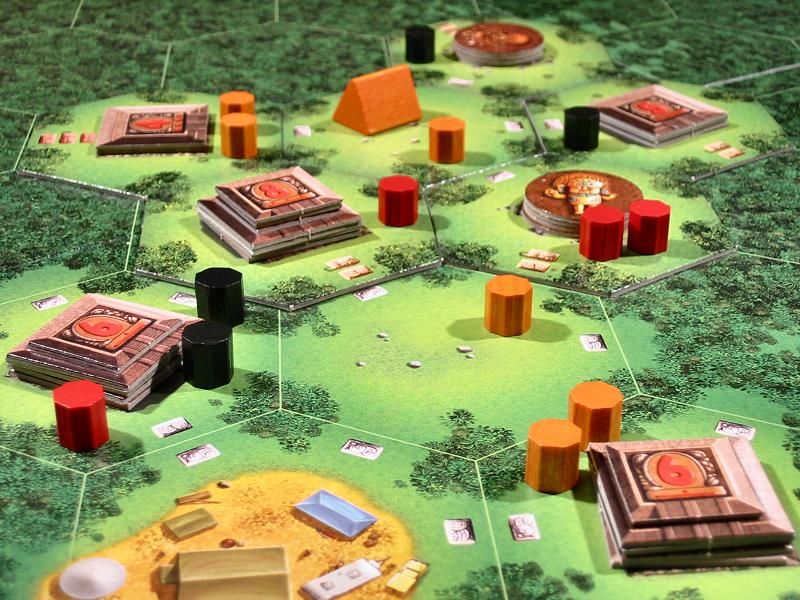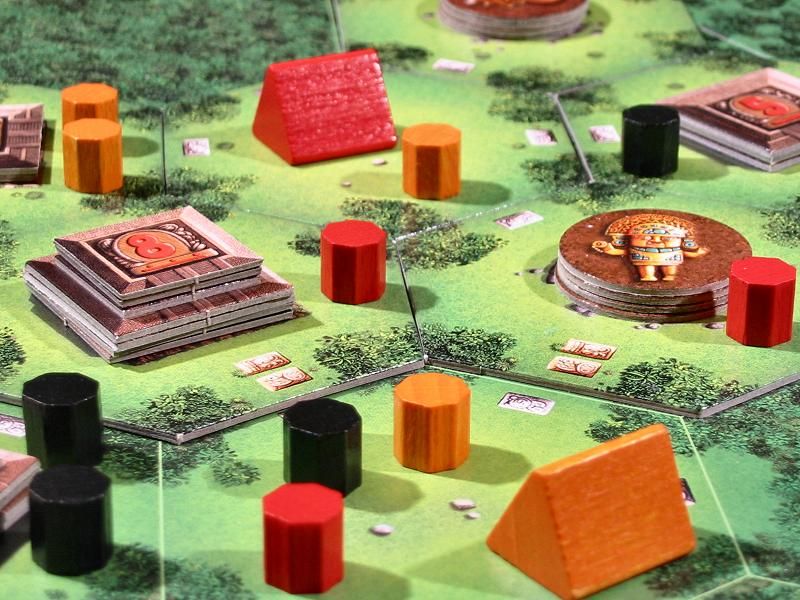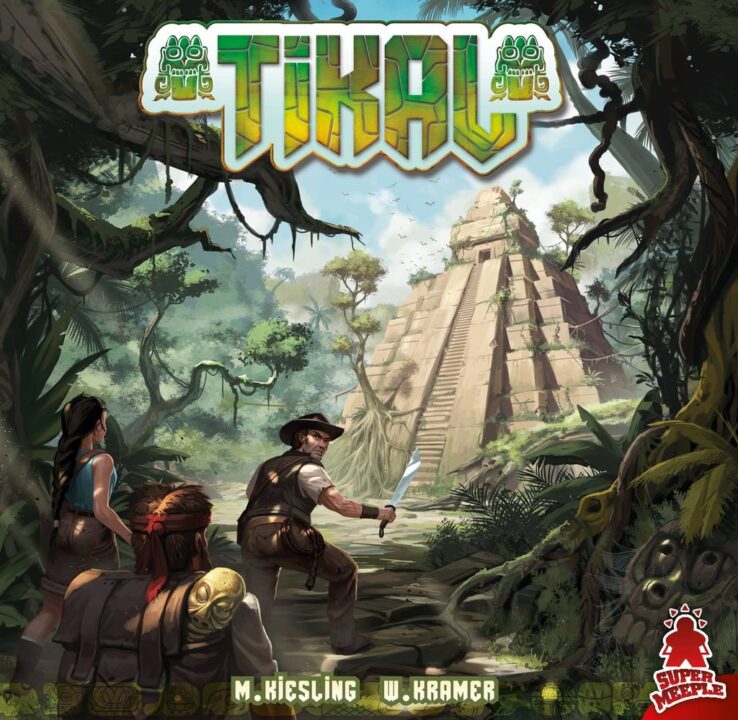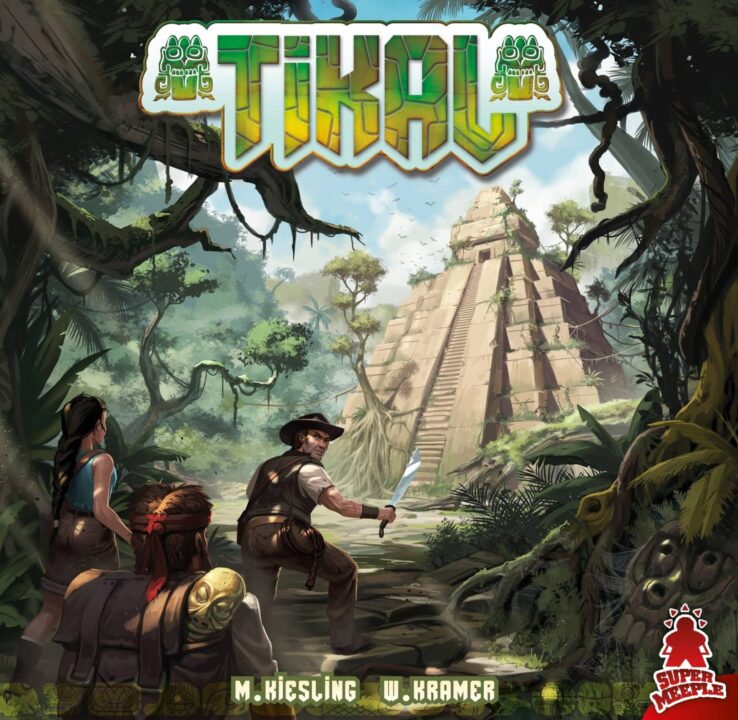Overview
Welcome to this review of Tikal, a game that stands as a testament to the elegance of classic board game designs. Here, strategy and adaptability merge seamlessly through an array of mechanics that promise to engage both novice and seasoned players alike. Nestled within this review, we delve into the thrilling realm of ‘Strategic Tile Placement’, ‘Area Control Mechanics’, and the unparalleled ‘Player Interaction Depth’ that collectively shape the remarkable gaming experience found in Tikal. Join me as we excavate the depths of gameplay, discover strategic nuances, and unearth the reasons why Tikal has maintained its revered place within the pantheon of board gaming.
Array
Want to know more? Read our extensive strategy guide for Tikal.
Strategic Tile Placement: Tikal’s Tactical Terrain
First and foremost, Tikal positions strategic tile placement at its heart, unfolding the richness of the jungle one piece at a time. Adroitly placing a tile can sharply swerve the tides of fortune. Every drawn terrain piece emerges as a mini-event, one where anticipation ripples through players as they envisage potential moves. Indeed, the game transforms players into cunning strategists; they must not only plan for imminent placement but also forecast subsequent possibilities, ensuring an engaging and interactive experience.
Maximizing Move Efficiency
Moreover, the tactical layer of Tikal review bubbles to the surface as you deploy your expedition team. With each new tile, connecting pathways and claiming temples become crucial decisions—especially when considered in tandem with your limited action points. Consequently, transitions between turns charge with crucial considerations, as each move dictates not just immediate gains but also longer-term implications. This synchronized dance of strategy and foresight is what provides Tikal with an allure that hooks board game enthusiasts.
Fortunes Written in Tiles
Admittedly, the draw of the tiles introduces an element of unpredictability. Nevertheless, savvy players embrace this randomness, integrating it into their tactical tapestry. Each round spirals into a compelling narrative populated by players’ choices, leaving an indelibly personal stamp on the adventure. This fusion of planning and chance strikes a harmonious balance that Tikal achieves with aplomb.
With ‘strategic tile placement’ dissected, we’ll excavate deeper into the ruins of Tikal—unearthing another pillar of the game: the area control mechanics.

Dominance in the Jungle: Mastering Tikal’s Area Control
In the Tikal Review, area control mechanics emerge as a pivotal aspect of the gameplay, allowing strategy and foresight to shine. Early on, players are drawn into decisions on whether to spread their expedition forces wide for a dominant presence or focus them closely for solid strongholds. The drama of choosing when and where to exert power is punctuated by the unpredictable action point allowance. As a result, players feel the weight of every move
Building Influence and Calculated Risks
Persistently planning is key—as securing temples directly manifests as points by the end. Placement and area control in Tikal are directly tied, each temple surrounded by a seems-to-be silent war of far-sighted planners. Moreover, each player’s intent to control a valued section often leads to unexpected alliances which can swiftly change the tide of power throughout the game.
Claiming Territory Amidst Uncertainty
Diving deeper, Tikal’s incessant question isn’t just how you control particular zones but when. Throughout the game, players must accurately judge the perfect moment to seize control with limited action points per turn, an ability especially crucial before scoring rounds. Furthermore, unpredictability persists with the enticing choice of playing with hidden scores that provides a veneer of mystery to players’ progress.
Following the core of competitive exploration in Tikal and just as compelling, lies our next thrilling review section: Player Interaction Depth.

A Dance of Wits and Will: Player Interaction in Tikal
In the Tikal review, we come to an intriguing aspect: player interaction depth. Surely, for many board game enthusiasts, the pulsating heart of gaming lies within the mechanics sparking lively interplay. Tikal, set amidst ancient temples and treasures, offers not merely a solo excavation race but an interconnected combat of strategies.
Strategic Alliances and Rivalries
Firstly, imagine this: you’re forging ahead when another archaeologist sidesteps, blocking your path. In Tikal, such maneuvers aren’t crudely random, they unravel your rivals’ intentions/move strategies, fueling a social dichotomy of transient alliances and brewing rivalries that require keen observation and intuition.
Ongoing Tactical Engagement
Secondly, conversation—I witnessed how turns prompt table-talk, deliberating over explorers’ deployments that can either obstruct or accidentally aid another. Each move in Tikal begs participation, fostering intrigue throughout, a sensational draw for those favoring engagement over idling warfare. As your move intertwines with interventions, social engagement crescendos.
Tikal tangles player-to-player engagement, compelling and invigorating. Do I recommend Tikal for your next game night? Absolutely—for its brainstorming intricacies and the sheer delight carving the sessions to memorable experiences.

Conclusion
Concluding our Tikal review, we’ve traipsed through jungles, unearthed ancient treasures, and manipulated mystical tiles and territories to outwit and outmaneuver our opponents. The game’s key mechanics—strategic tile placement, assertive area control, and deeply interactive player dynamics—coalesce to create an experience that’s as challenging as it is entertaining. Beyond rigorous strategic play, Tikal is a social encounter, requiring diplomacy and perception to succeed in the shifting landscape of temples and treasures. Whether you’re a seasoned strategy enthusiast or a board game explorer looking for your next venture, Tikal balances complexity with communal fun. For these reasons, it comfortably finds its place on my shelf and, indeed, I highly recommend adding it to yours.


